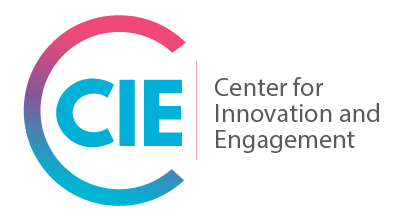The Center for Innovation and Engagement (CIE) is a HRSA Special Projects of National Significance (SPNS)-funded project that identifies, catalogs, disseminates and supports the replication of evidence-informed approaches and interventions to engage people with HIV who are not receiving care, or who are at risk of not continuing to receive care. To support the real-world replication of the cataloged interventions, CIE provides steps for implementation and resources such as, but not limited to, replication tips, job aids, a cost calculator, and technical assistance.
Additionally, CIE is supporting three intervention pilots at Howard Brown Health to assess replication and adaptation for implementation.
CIE, led by NASTAD’s Health Equity Team, builds on NASTAD’s longstanding achievements to make measurable differences in achieving equity in healthcare. NASTAD is a leading non-partisan, non-profit association that represents public health officials who administer HIV and hepatitis programs in the U.S. NASTAD’s sole mission is to end the intersecting epidemics of HIV, viral hepatitis, and related conditions.
This brief video describes how CIE identified and selected the evidence-informed approaches.
How Does CIE Define Evidence-Informed Approaches and Interventions?
Evidence-informed approaches and interventions are tools, strategies, or models that have been proven as a means of providing statistically significant improvements in HIV care and treatment outcomes for people with HIV.
How Did CIE Identify the Evidence-Informed Approaches and Interventions on this Site?
In collaboration with Northwestern University’s Center for Prevention Implementation Methodology and evidence and dissemination subject matter experts (SMEs), CIE identified and cataloged evidence-informed approaches and interventions by:
- Conducting a systematic literature review for studies that demonstrate the effectiveness of an intervention, include a clearly defined approach, prioritize linkage, retention or re-engagement components, and include statistically significant outcomes.
- Conducting key informant interviews with Request for Information (RFI) respondents who submitted innovative interventions for consideration.
- Assessing registries, inventories, abstracts, and posters from HIV-related conferences to discover interventions.
- Developing and applying a rubric to measure the strength of evidence for each intervention.
- Developing and applying an impact scoring rubric to measure feasibility, acceptability, appropriateness, relevance, reach, sustainability, and transferability of each intervention.
- Selecting high priority interventions from those ranking in the top 50th percentile based on strength of evidence and strength of impact.
What is the Basis for the Strength of Evidence Rubric?
This rubric is based on CDC’s Prevention Research Synthesis (PRS) criteria for:
- Evidence-Based Interventions (EBIs) for Linkage to, Retention in and Re-engagement in HIV Care (LRC), and
- Evidence-Informed Interventions (EIs) for Linkage to, Retention in and Re-engagement in HIV Care (LRC).
How Were Steps 5 and 6 of the Identification Process Implemented?
CIE convened an Evidence and Dissemination Expert Panel (EDEP) consisting of HIV healthcare experts from across the U.S. CIE presented interventions ranking in the top 50 percentile of strength of evidence to EDEP members, who each utilized the CIE-developed impact scoring rubric to measure the feasibility, acceptability, appropriateness, relevance, reach, sustainability, and transferability of each intervention.
EDEP members selected high priority interventions that ranked in the 50th percentile based on both strength of evidence and strength of impact.
